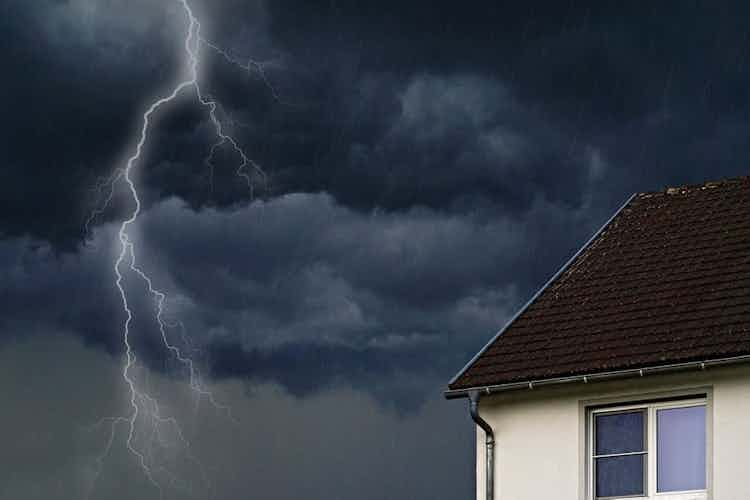The right home insurance can be a lifesaver if things go wrong. But there are quite a few home insurance myths that could make you pick the wrong insurance. If you are looking for new insurance or want to ensure your current insurance works for you, check out these persistent home insurance myths.
Myth 1: You should insure your home by market value
People often insure their home by basing their estimates on the house’s current market value. The reason the myth lives on tends to be down to ease of estimation. You can look at the current market prices and get going. Sometimes you could also find it more affordable to do so.
The truth is that you should insure your home based on what it would cost to rebuild and replace it.
If you live in an area where house prices are climbing, you could end up paying for more than you need to if you go by market value. If you live in an area where house prices are typically lower, then you might not have adequate insurance cover. Basing your house value on market value is problematic in both cases.
Always ensure you calculate the value considering what replacing your house would cost. That’ll give you the most accurate insurance.
Myth 2: Home insurances cover everything you have
You’re not necessarily covered from head to toe just because you have home insurance. You shouldn’t think that home insurance automatically extends to every little thing in your possession.
It all comes down to your insurance. Home insurance has two components:
- Buildings insurance, covering the structure of the house.
- Contents insurance, which covers most things inside your house, such as furniture.
If you own your property, you will need buildings insurance unless you live in a flat. If you are renting a house or flat, you would only need contents insurance.
However, even with the right home insurance, specific exclusions might apply. For example, you might need to buy added cover if you store valuable antiques in your home. Items are also often not covered if you take them outside of the house. For example, most insurances cover a stolen bike from your property. But if the bike is stolen at work, your insurance might not cover it. Some insurance policies do provide this coverage, which is why the myth is so persistent.
You need to check what your insurance covers instead of assuming things are covered. Don’t just rely on assumptions or hearsay.
Myth 3: You’re covered if your pet decides to eat your sofa
Pet owners know that pets can cause all sorts of trouble. But it’s a myth to assume your home insurance covers curtains pulled down by cats or sofas chewed up by dogs.
Your policy might cover simple breakages, but most insurance companies don’t pay out for damage caused by chewing, tearing, scratching, or fouling. You would have to add added cover for these. Added cover and extended warranties on furniture are a good idea if you have pets. These provide you with the cover you need.
Myth 4: Insurance providers don’t cover ‘acts of God’
You can find lots of people claiming that ‘acts of God’ aren’t covered. These are events outside of human control, such as natural disasters. According to the myth, your insurance company won't cover if your home suffers damage because of high winds, for example. The myth is very rooted in the idea that getting insurance on a high-risk flooding area is difficult. We'll talk about the myth surrounding flooding and home insurances later. But the concept of insurance companies not covering natural events is usually scaremongering.
The reality is a little different. Most policies cover natural disasters. If your home is struck by lightning, then you can claim for the damage caused. There is generally no mention of 'acts of God' in home insurance. However, there may be exclusions, and it’s always important to read the fine print.
Myth 5: You should exaggerate in your claims
If you are making a claim, some people might suggest you bump up the claim. The idea is that insurance companies will always try paying just a bit less than what you ask. By exaggerating the claim slightly, you can get the right amount.
This isn’t true, and it could end up being costly to you. Knowingly overstating your claim is a form of fraud. Not only could you end up paying a fine, but it might also hurt any future claims.
Myth 6: You’re covered for the whole value
It’s a myth to think that when you make a claim, you are covered for the full value of the damaged or lost item. The thinking is that if your home insurance covers a damaged laptop, it’ll get you a new similar laptop.
Home insurance has a component called ‘excess.’ It refers to the amount you’ll pay towards a claim before the insurer pays. You might have two types of excess:
- Compulsory, which is a fixed amount your insurer sets for you
- Voluntary, which is the amount you agree to contribute
You should know how much excess you need to pay when making a claim. Keep in mind that your premiums are lower when your voluntary excess is higher.
Myth 7: You can’t get home insurance in a high-risk flooding area
While your home insurance in a high-risk flooding area could cost a lot, it’s a myth to think you can’t get insurance at all.
The myth is based partly on real struggle people had in these flooding prone areas. But a Government scheme is changing the situation slowly. Flood Re helps bring down premiums for people with houses in flooding prone areas, and it is possible to find home insurance even if you live in these places.
Myth 8: Buildings and contents insurance must be from the same company
Home insurance consists of the two components mentioned earlier:
- Building insurance
- Contents insurance
While many know you can get one or both, there is a myth that you need to buy them from the same provider.
If you want, you can buy these types of cover separately. You can compare prices from different providers. It might be cheaper to buy separate policies. It won't always be the case, but it is worth checking out.
Don’t buy home insurance with myths in mind
The above home insurance myths are often down to assumptions. One insurance policy might not cover a certain thing, and the word starts spreading that none of them does. Never buy home insurance assuming things are included or not. Ensure you understand how home insurance works and what the insurance provider is offering. It’s the best way to guarantee you get a policy that works for you – with no hidden surprises!







